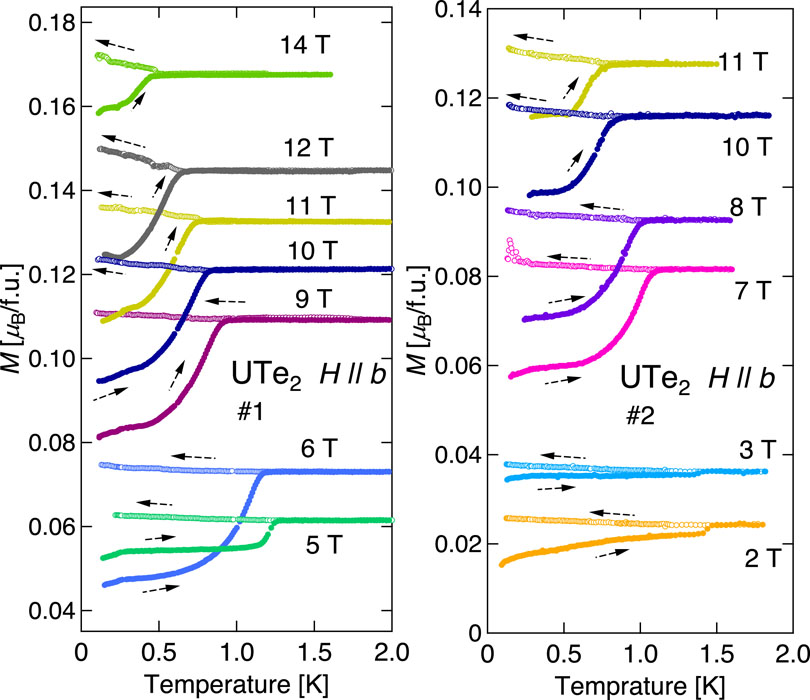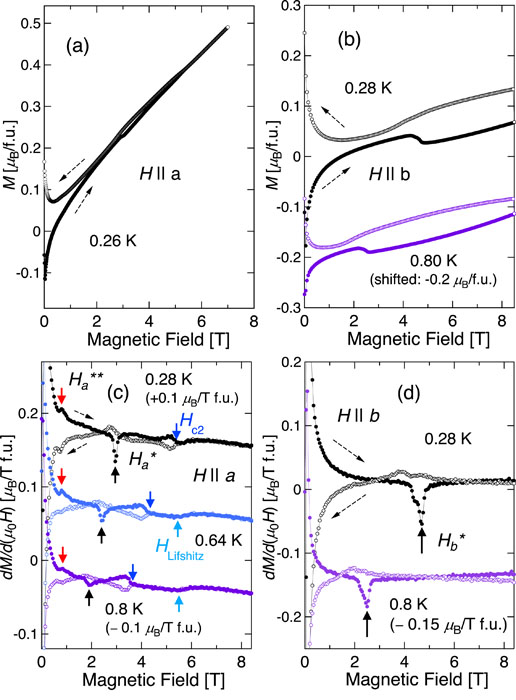Anomalous Electromagnetic Response in the Spin-Triplet Superconductor UTe2
PI of Joint-use project: Y. ShimizuHost lab: Yamashita Group
Unconventional superconductivity with a spin-triplet pairing state has attracted considerable interest because of its unusual nontrivial superconducting order parameters and magnetic response, which are quite different from those of conventional Bardeen-Cooper-Schrieffer superconductors. In particular, the spin-triplet pairing state protected by a topological invariant provides a good opportunity to seek exotic quasiparticles such as Majorana fermions. The recent discovery of unconventional superconductivity in UTe2 has provided a new opportunity in the research of spin-triplet pairing states in solid state physics [1]. One of the most important challenges for studying the superconducting state of UTe2 is to clarify its thermodynamic behavior and its magnetic response.
In this study [2], to further understand the spin-triplet superconductivity in UTe2 from a thermodynamic point of view, we investigate the magnetic field and the temperature dependence of dc magnetization, heat capacity down to 80 mK in magnetic fields up to 14 T. Our high-resolution magnetization measurements done by the Faraday magnetometer for H || a (the magnetic easy axis, Fig. 1(a) and (c)) and for H || b (hard axis, Fig. 1(b) and (d)) reveal multiple anomalies Ha** (Ha**, Ha*, and Hb*) in the field dependence of the magnetization M(H) below the upper critical field (Hc2). These anomalies are also observed in our ac susceptibility measurements done down to 30 mK [2].
We further find the temperature dependence of the magnetization, M(T), is changed at the anomaly. Figure 2 shows M(T) observed in two different crystals at different magnetic fields applied along the b axis. As shown in Fig. 2, the difference between zero-field cooling and field-cooling processes in the superconducting state below Hb* becomes smaller as approaching Hb* and then larger with strong irreversibility above Hb*.

Fig. 2. Temperature dependence of magnetization M(T) at different magnetic fields applied along the b axis of UTe2 sample #1 (left) and #2 (right). The solid and the open symbols show the data obtained in the warming up process after zero-field cooling and that obtained in subsequent cooling process, respectively.
These anomalies observed both in M(H) and M(T) in the superconducting phase are attributed to strong pinning effects on vortices in the spin-triplet superconducting state of UTe2. In addition, we find a broad steplike anomaly just above Hc2 for the magnetic easy axis (H || a). Given that this anomaly does not depend on the temperature and is observed above the superconducting transition temperature, we suggest that this is caused by the Lifshitz transition of this compound.
The anomalous vortex states in UTe2 suggested by our magnetization measurements are also consistent with recent NMR measurements [3] showing gradual decrease of the NMR Knight shift and shoulder-like anomalies in the NMR spectra. These anomalies observed for 6–10 T indicate the presence of inhomogeneous internal fields, which could be brought by a gradual change of the d-vector of the spin-triplet state in vortices. We suggest that depinning of the d-vector above Hb* that is pinned to d || H at lower fields might be related to these anomalies observed in our magnetization and the NMR measurements.
References
- [1] D. Aoki, K. Ishida, and J. Flouquet, J. Phys. Soc. Jpn. 88, 022001 (2019).
- [2] Y. Shimizu, S. Kittaka, Y. Kono, T. Sakakibara, K. Machida, A. Nakamura, D. Li, Y. Homma, Y. J. Sato, A. Miyake, M. Yamashita, and D. Aoki, Phys. Rev. B 106, 214525 (2022).
- [3] G. Nakamine, K. Kinjo, S. Kitagawa, K. Ishida, Y. Tokunaga, H. Sakai, S. Kambe, A. Nakamura, Y. Shimizu, Y. Homma, D. X. Li, F. Honda, and D. Aoki, J. Phys. Soc. Jpn. 90, 064709 (2021).

